
Review on MUSTART TRAVELMASTER Level 2 Portable EV Charger - 25Ft Cable, Intelligent Plug ID Auto-Adjusts Max Safe Current 15A/25A/32A. by Jonah Riggle

Nice device, odd amperages
Regarding Mustart gen2 EVSE charger with intelligent plug technology.The device seems to be of good quality:-Everything works well-The J-1772 plug has a good heft and has had no problems providing charging with the vehicle outisde during rainstorms-The cable is 8GA wire, which is plenty for up to 40A @ 240v-The adapter connector is snug, feels well made, and works well.-The control pilot microswitch actually functions (depressing the button on the j-1772 plug actually stops charging as it should)-The display is plenty bright and easy to read. The voltage appears to be read with some kind of a meter as it fluctuates slightly (up and down a couple volts).The downsides:-Charge RateOstensibly, this device will identify (presumably by a resistor across neutral and ground pins in the intelligent connector of the plug adapter) which adapting plug is connected to it and configure the "maximum safe current".In practice, however, the 5-15P adapting plug (120v/15A) configures the device for 20A, while a 6-20P adapting plug (240v/20A) configures the device for 15A. The former should be configured for 12A per code(80% of 15A as a longer than 3hr "continuous" load), and would actually cause 15A circuit breakers to trip, while the latter should be configured for 16A per code and is just underperforming.-FitAs others have mentioned, the plug is snug on my North America 2013 Nissan Leaf SV. I don't see this as a downside, personally.-IP RatingIt is disappointing that Mustart's engineers didn't see fit to waterproof the control box. While this may be used indoors often, much of the appeal - at least for me - is in being able to use it virtually anywhere with the adapting plugs. Indeed this is the reason I sought out a device like this. Some of those "anywheres" are likely to include RV camping sites sporting 14-50 receptacles and those may at times be quite rainy. Was the box allowed to get wet, there would be far less concern under those types of conditions.-The plug strain relief loopThere's a quite soft rubber loop that is merely snugly fitted over the cable between the universal adapter and the charger control box. Given the 8ga cable it's barely serviceable at best and ultimately would leave the control box dangling from the cable over time. Why do most manufacturers avoid putting a hang ring directly on the control box?-8ga cableOn the one hand, this is necessary for high-output chargers (6.6kW+) but the specific cable used in the product, while seeming to be very high quality overall, is already quite stiff at temperate summer temperatures (65F-90F). It will be interesting to see how hard the cable is to wrangle in the winter. Of course, as 8ga cable, it is quite heavy, but that comes with the territory.-Storage/Carry bagThe bag could be a bit larger. Given the stiffness of the cable, it can feel a bit "bad" winding it up small enough to comfortably fit into the bag if you don't take the time and effort to carefully wind in the direction of the reel memory in the cable. The bag has roughly enough room for a couple cable adapters, but any more than that, and you'll need something else to carry them or have them loose in your cargo area. The bag also does not seem particularly stout. It's made of the same sort of low thickness tarp-like mesh that cheap car accessory kits are often sold in.-Protector caps for intelligent connectorThe plastic caps are very snug, they actually need to be deformed slightly to fit into the end. However, once they are in there, they are not going to easily fall out, and they are retained to the adapting plugs by a metal loop. This aspect is very close to well thought out, it just looks like the covers themselves are not quite the right size. I'd have liked to have seen a similarly machined aircraft aluminum cover that fits in with an o-ring to seal it. Or a proper plastic cap would be ok also.-Adapting plug cost and availability.At the time of this review, the adapting plugs run roughly $50. This seems a bit steep. I'd buy every adapter I could foreseeably use at $20 a piece, but at $50, I'm picking and choosing the most likely ones (5-15P everywhere, TT-30 and 14-50 at campgrounds, etc). While I can understand the market is small for twist lock plugs, I'd have liked to have seen them available, especially at the $50 price.-Adapting plug "intelligence"While I like that the adapting plugs automatically configure the charger for what should work, it would be good to be able to down-rate the device for reality. While at home, this isn't likely to be a big deal, but a loose 14-50 plug at an RV campground could cause enough heat to melt the molded plug, and with no way to down-rate the charger, you'd be stuck manually monitoring it.Other factors down to preference:-At this moment, it's only available in one color, meh. And the cable is black, which variously is unobtrusive or "black like everything else". It doesn't appear dirty, but it's also not particularly visible.-The locking latch on the J-1772 plug is tapered at the vehicle end. This allows it to defeat the charging lock on my North America 2013 Nissan Leaf SV. I'm able to depress the button on the J-1772 and withdraw the plug while the car's charge port is locked.-The temperature display is perhaps misleading. It shouldn't really matter whether there is a temperature display or not. Others are misguided to think that the temperature should show charging system or battery temperature, as that data is not part of the specification for EVSE chargers' (very limited) protocol. It is a moderately intelligent switch, that's all. Then again, knowing the temperature of the charger is almost certainly irrelevant - it should only get significantly warm if there is a failure of the switch contacts or if the internal wiring was undersized. If a temperature monitor was being included, I would have preferred it was monitoring a thermocouple molded into the end of the adapter plug to identify a thermal problem where this device can actually make a difference - between the plug and the outlet.-The gen2 device shows kWh consumed since the start of the most recent charge cycle. It would have been nice if this had some kind of "trip odometer" function with a reset button. It would be nice to show the last charge, but also the cumulative power since the device itself was plugged in - or since the last reset. Such a feature would require some kind of memory capability while off, which adds a layer of complexity most users are probably not willing to deal with over the life of the product or given the probable added cost.Experiential notes:-I've had only one experience where the charger was left plugged into the wall with the 5-15P adapting cable while unused for approximately 48 hours. When plugging into the vehicle, it appeared that the control pilot did not indicate ready to charge (no response from vehicle). Unplugging the wall end and reconnecting it resolved the problem.
- Automotive
- The device may not work correctly if the power source is not stable or if there is an issue with the electrical wiring in the building
New products
Comments (0)
Top products in 🚪 Garage & Shop

Jack Pad Adapter Anodized Black Replacement For B-M-W 135 335 535 E82 E88 E46 E90 E91 E92 E93 E38 E39 E60 E61 E63 E64 E65 E66 E70 E71 E89 X5 X6 X3 1M M3 M5 M6 F01 F02 F30 F10(1 Pcs)

21 Review
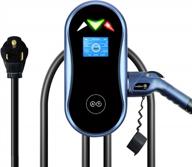
MUSTART Level 2 EV Charger With WiFi, 16/25/32 Amp Smart Electric Vehicle ETL Certified Indoor/Outdoor NEMA 6-50P 25Ft Cable

30 Review
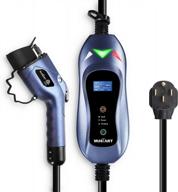
MUSTART Level 2 EV Charger With 240V, 25Ft Cable, And Adjustable Amps (16/25/32) – Portable Electric Vehicle Charging Station With Delay Function And NEMA 14-50P Plug-In

29 Review
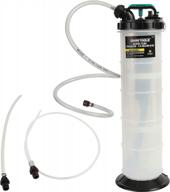
OEMTOOLS 24397 2.5 Gallon Manual Fluid Extractor Pump For Oil And Transmissions, With Oversized Handle For Easier Use And Extraction

23 Review
Another interesting products
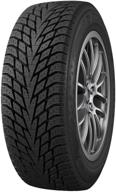
Cordiant Winter Drive 2 255/55 R18 109T

33 Review
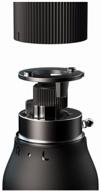
Xiaomi Mijia Ratchet Screwdriver 16 in 1 Screwdriver with Interchangeable Bits, 10 pcs, Black

22 Review
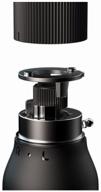
Reversible Mi 16-in-1 Ratchet Screwdriver

21 Review

Bit and socket set Stels Tool set, 1/2", 1/4", CrV, plastic case 94 pcs, Stels, 94 pcs, black

46 Review

